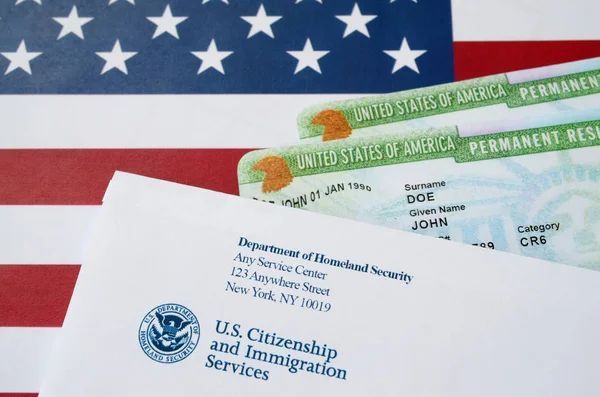🗣️ Fluent in English, Spanish & Portuguese 🌍
Exciting News: New Countries Join TPS Designations!
TPS Designations: New Countries Added to the List
Understanding Temporary Protected Status (TPS)
Temporary Protected Status (TPS) is a vital humanitarian program that allows individuals from designated countries experiencing ongoing conflict, environmental disasters, or other extraordinary conditions to live and work in the United States temporarily. This program provides a lifeline for those who cannot safely return to their home countries. Recently, new countries have been added to the TPS list, expanding the opportunities for protection and stability for many individuals who are in dire need of assistance. The TPS program not only offers a safe haven but also fosters a sense of community and belonging for those who have been uprooted from their homes due to circumstances beyond their control.Recent Additions to the TPS List
The U.S. government periodically reviews and updates the list of countries eligible for TPS. The recent additions reflect the changing global landscape and the urgent need for humanitarian assistance in various regions. Here are some of the newly designated countries that have been added to the TPS list:- Country A: Description of the situation that led to its TPS designation, including details about the ongoing conflict or crisis affecting its citizens.
- Country B: Overview of the challenges faced by citizens, prompting the TPS decision, such as political instability or widespread violence.
- Country C: Explanation of the environmental or political factors influencing the TPS status, including natural disasters or government oppression.
Eligibility Criteria for TPS
To qualify for TPS, applicants must meet specific criteria. Understanding these requirements is crucial for individuals seeking protection. The main eligibility criteria include:- Being a national of a designated TPS country or having no nationality but last residing in that country.
- Continuous physical presence in the U.S. since the effective date of the TPS designation, which is essential for maintaining status.
- Meeting the registration requirements during the designated registration period, which is often time-sensitive.
- Not having been convicted of any disqualifying crimes, ensuring that applicants meet the moral character standards set by the U.S. government.
Application Process for TPS
The application process for TPS can be complex, but understanding the steps involved can help streamline the experience for applicants. Here’s a detailed breakdown of the process:- Determine Eligibility: Review the eligibility criteria to ensure you qualify for TPS, as this is the first step in the process.
- Gather Required Documents: Collect necessary documentation, including proof of identity, nationality, and continuous presence in the U.S., which are critical for your application.
- Complete Form I-821: Fill out the Application for Temporary Protected Status accurately, ensuring all information is correct to avoid delays.
- Submit Your Application: Send your completed application along with the required fees to the appropriate USCIS address, following all submission guidelines.
- Attend Biometrics Appointment: If required, attend a biometrics appointment to provide fingerprints and photographs, which is a standard part of the process.
- Receive Decision: Wait for USCIS to process your application and notify you of their decision, which can take several months.
Benefits of TPS
Individuals granted TPS enjoy several benefits that can significantly improve their quality of life and provide a sense of security. These benefits include:- Work Authorization: TPS recipients can apply for work permits, allowing them to support themselves and their families financially while living in the U.S.
- Protection from Deportation: TPS provides temporary relief from removal proceedings, ensuring individuals can remain in the U.S. safely without the fear of being sent back to dangerous conditions.
- Travel Authorization: In some cases, TPS holders may be eligible to travel outside the U.S. and return without jeopardizing their status, which can be crucial for family visits or emergencies.
Challenges Faced by TPS Recipients
While TPS offers significant benefits, recipients often face challenges that can impact their lives and well-being. Some of these challenges include:- Uncertainty of Status: TPS is temporary, and recipients may live in fear of losing their status if their country is removed from the list, leading to anxiety about their future.
- Limited Path to Permanent Residency: TPS does not provide a direct path to permanent residency or citizenship, leaving many individuals in a state of limbo regarding their immigration status.
- Employment Barriers: Some employers may be hesitant to hire individuals with temporary status, impacting job opportunities and financial stability for TPS recipients.
Community Support and Resources
Many organizations and community groups provide support and resources for TPS recipients. These resources can help individuals navigate the complexities of their status and access essential services. Some valuable resources include:- Legal Aid Organizations: Many non-profits offer free or low-cost legal assistance to help with TPS applications and renewals, ensuring that individuals receive the guidance they need.
- Community Centers: Local community centers often provide information and support for TPS recipients, including job training, language classes, and social services.
- Advocacy Groups: Various advocacy organizations work to protect the rights of TPS holders and push for legislative changes that could benefit the community.
Conclusion
The recent additions to the TPS list highlight the ongoing need for humanitarian support in response to global crises. Understanding the eligibility criteria, application process, and available resources is essential for individuals seeking TPS. By staying informed and connected with community resources, TPS recipients can navigate their status and work towards a more stable future, ultimately contributing to the communities they are a part of. For those interested in learning more about their options or seeking assistance, we encourage you to schedule a consultation with Quattrochi, Torres and Taormina , where experienced professionals can provide guidance tailored to your situation. Disclaimer: The information provided in this blog post is for general informational purposes only and does not constitute legal advice. The content is not intended to create, and receipt of it does not constitute, an attorney-client relationship. No action should be taken based on the content of this blog post without first consulting qualified legal counsel. While every effort has been made to ensure the accuracy and completeness of the information, Quattrochi, Torres & Taormina, P.A. makes no warranties or representations as to the accuracy, completeness, or suitability of the information for any purpose. Quattrochi, Torres & Taormina, P.A. will not be liable for any errors or omissions in this information nor for the availability of this information. Any reliance you place on such information is strictly at your own risk. Quattrochi, Torres & Taormina, P.A. disclaims any and all liability with respect to actions taken or not taken based on the contents of this blog post to the fullest extent permitted by law. This post does not cover every possible situation, and you should always consult with an attorney or the relevant agency before taking any action. By using this site and relying on the information provided, you agree that Quattrochi, Torres & Taormina, P.A., its partners, employees, and affiliates, shall not be held liable for any direct, indirect, incidental, special, or consequential damages or losses, whether in contract, tort, or otherwise, arising out of or in connection with the use of the information contained in this blog post.
By Juan Torrico
•
January 9, 2025
Stay updated on the latest developments in border wall construction and security measures, as we explore funding, technological advancements, and community impacts shaping the future of U.S. border policy. Click to learn more about the complexities and implications of these critical initiatives!
CONTACT US
950 S. Winter Park Dr., Suite 207
Casselberry, FL 32707
PRACTICE AREAS










